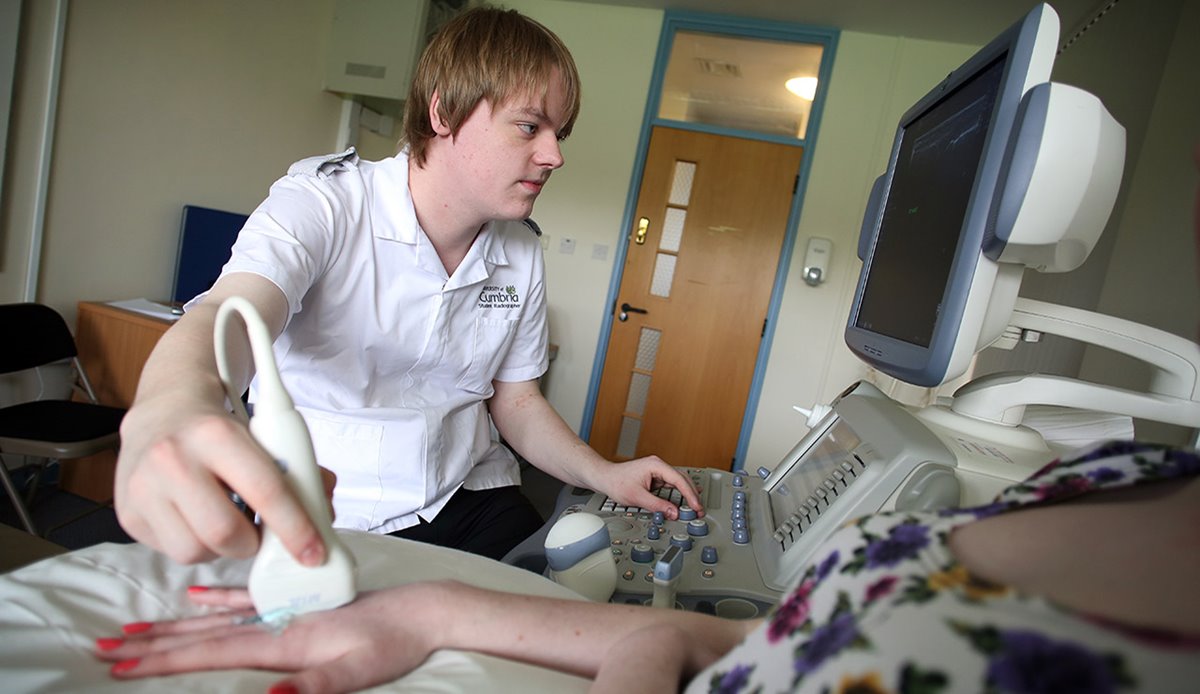Our years in ultrasound education have taught us that there is no such thing as a ‘bread and butter’ sonographer anymore; the field of ultrasound has expanded exponentially and the role of a sonographer has kept pace.
Sonographers, from a wide range of healthcare backgrounds, are now undertaking an increasing range of specialist roles. As educationalists, we have had to adapt to this by continually evolving our ultrasound programme to meet the changing needs of healthcare providers.
There is a well-documented national shortage of sonographers and many ultrasound departments are struggling to meet the demands being placed on them. There is growing concern that the current model of ultrasound education is becoming difficult to sustain for several reasons, including loss of funding and lack of backfill for training posts, leaving deficits in the workforce.
There has been much debate around whether a radiography/healthcare background is required to become a sonographer. In reality, there are already many excellent practitioners working within healthcare who have not come from, what could be described as, a traditional background. The fantastic work of vascular scientists is one example.
With this in mind, after extensive consultation with our local clinical stakeholders and with their support, we made the bold decision to develop the UK’s first CASE accredited two-year full-time ‘direct entry’ MSc Medical Ultrasound programme. Led by Gareth Bolton, we worked on developing it throughout 2015 and our first cohort commenced in January 2016.
The University of Cumbria has run a very successful part time, ‘traditional’ ultrasound programme for more than 25 years aimed at registered, employed health care professionals wishing to train in ultrasound. This continues to attract viable cohorts.
The aim of the new educational route is to increase our training numbers and provide an alternative training option to clinical departments, as these students fund themselves through the course. This also reduces the impact on clinical departments who, under the traditional pathway, were left with radiography posts that would need back-filling; there is also no issue with ‘stealing’ a member of staff from other struggling clinical departments, leaving them with un-filled posts.
We consider ourselves very lucky to have supportive, forward thinking local clinical departments who were happy to support this programme and act as clinical placements. When we made the decision to develop a postgraduate MSc programme, following several stakeholder meetings, it was clear that Master’s level was the preferred educational level in our region.
The first point to clarify is what is meant by the term ‘direct entry’. Applicants do not need to be employed within healthcare or hold an existing healthcare qualification, opening up the field of ultrasound to a new cohort of potential students.
Because this is postgraduate level study, the applicants must already hold a BSc honours degree and a stringent seven-step process ensures we select suitable candidates. We also enlisted the support of our clinical colleagues in this process.
This new route mirrors the current radiography education model where the university is responsible for selecting the students, with the input of local clinical stakeholders, and the students are placed at one of our placement hospitals for the duration of their training. This has introduced a completely new dynamic for ultrasound because it has reversed the roles of both the clinical department and the university.
The students are self-funding full time University of Cumbria students and we allocate each a clinical placement rather that the students being employed healthcare professionals sent to the university to undertake the course on a part time basis by their employer.
What we have noticed is that due to the flexibility of the programme, stakeholders have been able to tailor placement provision yearly according to their training capacity and adopt a ‘hop on, hop off’ approach to the programme where necessary.
Some train students on both the part time and the full time route, in effect doubling their training capacity for the same cost. Going forward, hopefully this flexibility will encourage other trusts to offer placements for direct entry students.
Our first cohort of five students commenced in January 2016. None of tthem are able to be HCPC registered, however they all successfully qualified and gained employment within the NHS. The second cohort of six are due to qualify in early 2019 and we have eight placements for our third cohort and 10 places for the 2019 starters. We are increasing numbers year on year as confidence in this new route increases and as these non-healthcare graduates prove their worth in the ultrasound community.
No one wants to see the end of the successful training route that has been available to qualified health care professionals for many years, but the stark fact is this alone is not producing enough sonographers to address the national shortage. We need to supplement numbers with new innovative programmes, and clinical departments are required to think outside the box and consider alternative methods of training to ensure this essential role prospers and maintains its reputation in the health sector.
